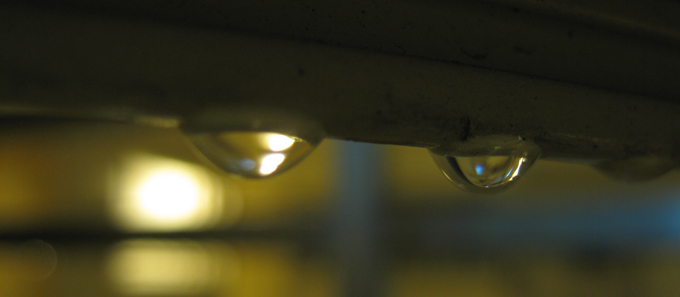
Drip edges are a component of solid roofing systems that prevent roof sheathing from taking on moisture due to rain or storms. As the name denotes the drip edge is located at the edge of the roof and extends beyond it, providing overlapping water proofing and structural support for shingles. Various drip edges are also bent or molded into various forms that channel water away from the roof edge. The United States EPA also recommends drip edges as a “best practice” for moisture control.
A Common Problem
A common problem that many homeowners find themselves facing is rotting fascia around the exterior of the house. The rotting condition of the fascia is a sign that water has compromised the structural integrity of the fascia board. This problem is often undiagnosed because it is unnoticed until another inspection or service from a professional roofing contractor is done.
In addition to rotting exterior components, water accumulation may appear in other parts of the home. Even though the fascia board is absorbing some of the water that has entered the home through driving rains, the remainder of the water continues to work its way to the bottom of the home, as it is propelled by gravity. Many homeowners note that water will back up or gather in low lying areas like their basements.
To complicate matters further, both scenarios often occur at the same time. This means that in addition to water building in low lying areas and ruined fascia, all of the building material that exists below the fascia and the bottom of the home may be compromised and should be inspected.
Weekend Fix Opportunity
Applying a drip edge to an existing roof can be done as a DIY project if homeowners are comfortable and knowledgeable enough with the process. A simple sheet-metal drip edge can be used to remedy the situation. Slip the flat, wide side of the drip edge or cap under the row of shingles closest to the gutters. The outer side of the drip cap/edge should extend over the gutter. Secure the new drip edge with a roofing cement compound. If needed the drip edge can be secured with nails. Your local roofer should be able to tell you what your municipal building code permits.
Make sure that the drop edge is attached directly to the wood sheathing of the roofing system and that you use a membrane or building paper for proper support and additional water proofing capability.
Schulte Roofing is a College Station roofer with over 18 years of experience. That experience is what allows Schulte Roofing the ability to easily diagnose water damage caused by failed roofing systems. If you feel that your roof could be compromised due to bad drip edges or missing drip edges, contact the Bryan roofing contractor today.
